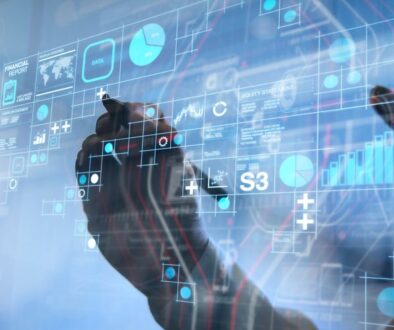DEM – What is it ? Why is it so important now ?
Digital Experience Management (DEM) is not just tooling.
Digital Experience Management is not new – it’s been around for several years. However, for most of this time it didn’t have a name. Most companies have the ability to conduct DEM but just don’t know how to.
So what is DEM ? Digital Experience Management (or sometimes “Monitoring”) is the end to end management of the IT users experience. From the early days of widespread corporate IT environments – IT operations managers have tried to minimise down time for the business by monitoring the systems that support it. This started with basic availability monitoring of IT infrastructure with a simple Up/Down alerting system. As these tools progressed more complex monitoring tasks could be performed such as Processor and Memory utilisation. This eventually evolved into specific application monitoring for both availability and performance.
This maturity however is not DEM. Traditional monitoring solutions still look at the IT estates from the perspective of the backend infrastructure and applications. A true DEM solution focuses on the end to end application / process journey from a user / customer point of view.
Where things become tricky is when 3rd party solutions come into play. You should have control over the parameters within your own estate, but when it comes to components that are part of a Cloud solution this can be more difficult. For example, if you are using a web service from a cloud provider how do you monitor from the end user through to that service. These things can be overcome using the tools provided by the cloud providers.
This is all great stuff – but a DEM tool is only as good as the information that surrounds it. It is pointless having the best of breed DEM tool if you don’t have accurate information to act on. For example, a DEM tool needs an accurate hardware and software asset list to work with. Without this all you will have is a list of errors and no way to accurately resolve them.
It is important to understand that Digital Experience is not just about the tooling. It is about “Experience”. Experience is not just the applications and the interface its also about the process as well. Ask yourself – do you remember your IT onboarding process – the first time you were given your company device. Was it informative, slick, well documented and quick? – unlikely right! All too often it’s usually rushed, poorly documented etc…. you get the picture.
What about training – is it fun, informative, easy to understand and useful. Probably not!!. It’s usually outdated, boring and long winded.
When your company’s IT department updates the systems you work with – are they well communicated? Do things always go to plan? Is everyone happy the next day? When you want that vital PowerPoint restoring from 2 weeks ago – is it available within minutes!
All these things add up to the user experience.
What about your customers – when they visit your web page – what’s their experience like.
Some facts:
Performance: 53% of mobile users abandon session if it takes longer than 3 seconds to load
Impact: 79% of users will not return after negative experience
Root Cause: 75% of users expect online help resolution within 5 minutes
And then we have day to day support. How do you contact IT, is it still via a helpdesk with an email or phone number? The vast majority of millennials wouldn’t dream of ringing a helpdesk – at best they may email – they prefer an instant response – Chat is the way forward and all this can be achieved using state of the art AI.
DEM is even more relevant in the “New Way of Working”. With more and more people working at home and a step change that will be here for good, it is vital that companies can monitor & measure the Digital Experience for all users and customers wherever they are. This is where it gets tricky. In a traditional office environment, you can control the environment. You know the infrastructure, the connections, the hardware etc… It’s a different ball game when it comes to home working or mobile working. Let’s take an example of a user working at home on their company laptop. The user rings up and says – “My emails are slow” – OK – so what do we look at. All looks well on the backend. You would normally start to look at the connectivity – but what could it be. Is it the Wi-Fi Connection? Is it the broadband speed, where is the router plugged in, do they even know where the router is? Is it a problem with the ISP, is there an issue on the built in Firewall, is it contention based – or is it Billy playing fortnight in his bedroom (Sorry – streaming his lessons over BBC iPlayer)?
It gets complicated – but there are tools out there that can help. Don’t get me wrong these tools were originally designed for the corporate world – but the vendors are playing catchup and have started to enhance the ability to do realistic troubleshooting at home.
A true DEM solution in my opinion needs the following: –
User centric monitoring platform with full device and environment monitoring.
Traditional Infrastructure Availability & Capacity monitoring
Accurate Asset List with controlled updates
Skilled People
Smooth Onboarding & Training
Efficient evergreen update process
Intuitive support features – Chat / Portals / Self Help
With these elements in place a company can truly manage the Digital Experience across their Estate.



